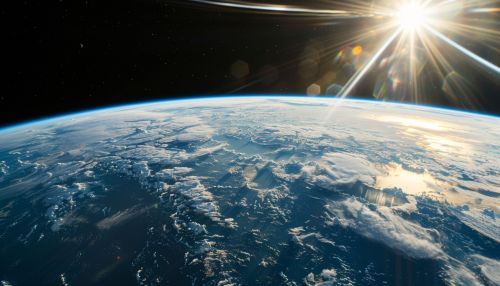Effects of global warming
Introduction
Global warming refers to the long-term increase in Earth's average temperature. Though it is a natural phenomenon, scientific evidence shows that human activities have significantly contributed to the recent increase in global temperatures, a process often referred to as anthropogenic global warming.


Causes of Global Warming
The primary cause of global warming is the increase of greenhouse gases in Earth's atmosphere. These gases trap heat from the sun, preventing it from escaping back into space and thereby warming the planet. The main greenhouse gases contributing to global warming include carbon dioxide (CO2), methane (CH4), and nitrous oxide (N2O).
Carbon Dioxide
Carbon dioxide is the most significant greenhouse gas released by human activities, primarily through the burning of fossil fuels such as coal, oil, and natural gas. Deforestation also contributes to CO2 levels as trees absorb CO2 and release oxygen through photosynthesis.
Methane
Methane is a potent greenhouse gas, with a global warming potential much higher than that of carbon dioxide. It is released during the production and transport of coal, oil, and natural gas. Methane is also emitted by livestock and other agricultural practices and by the decay of organic waste in municipal solid waste landfills.
Nitrous Oxide
Nitrous oxide is released from agricultural and industrial activities, during combustion of fossil fuels and biomass, and during treatment of wastewater.
Effects of Global Warming
Global warming has a wide range of impacts, affecting various aspects of the planet and life on it. These effects include rising sea levels, changing weather patterns, and impacts on ecosystems and biodiversity.
Rising Sea Levels
One of the most direct effects of global warming is the rise in sea levels. This is primarily due to the melting of glaciers and polar ice caps, and the thermal expansion of seawater as it warms.
Changing Weather Patterns
Global warming also leads to changes in weather patterns. It is expected to lead to an increase in the frequency and intensity of extreme weather events such as storms, floods, and droughts.
Impacts on Ecosystems and Biodiversity
Global warming affects ecosystems and biodiversity. Changes in temperature can disrupt the timing of natural events such as migration and reproduction, which can in turn affect food chains and ecosystems. Warmer temperatures can also expand the range of disease-carrying organisms, leading to an increase in disease outbreaks among wildlife.
Mitigation and Adaptation
Addressing global warming requires both mitigation and adaptation strategies. Mitigation involves reducing the flow of greenhouse gases into the atmosphere, while adaptation involves adjusting to current and expected changes in climate.
Mitigation
Mitigation strategies include reducing energy use, switching to renewable energy sources, improving energy efficiency, and sequestering carbon dioxide.
Adaptation
Adaptation strategies can include building flood defenses, developing drought-tolerant crops, and designing buildings and infrastructure that can withstand extreme weather events.
Conclusion
Global warming is a complex issue with far-reaching effects. While it poses significant challenges, it also presents opportunities for innovation and adaptation. Addressing global warming requires a concerted effort from all sectors of society, from individuals to governments and businesses.
